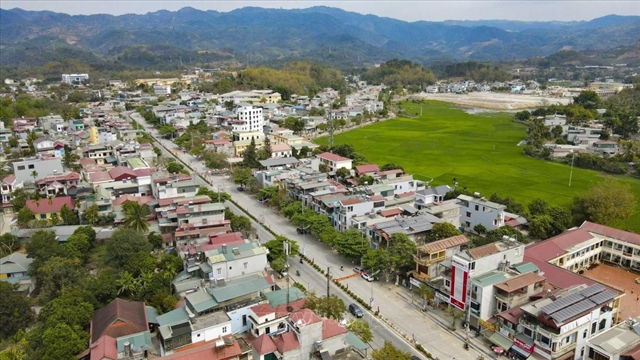 Economy
Economy

 |
| An aquaculture farmer in Quảng Ninh Province looking at her rafts devastated by Typhoon Yagi. — VNA/VNS Photo Thanh Vân |
HÀ NỘI — The need to set out detailed policies to support companies in the northern regions to recover production and restart their businesses, is a matter of urgency.
Phạm Đắc Yên, director of a gemstone painting company in Yên Bái Province, which faced unprecedented flooding due to heavy rains induced by Typhoon Yagi, estimated that it might take one month or longer for his business to come back to normal operations.
An agricultural cooperative in Chương Mỹ District, Hà Nội, is being forced to replant its farm after the flooding destroyed nearly ten hectares of vegetables.
Some companies in industrial zones in Hải Phòng, Bắc Giang, Bắc Ninh and Quảng Ninh have resumed operations, but not all.
Chairman of the Korean Business Association in Việt Nam, Hong Sun, said that local authorities quickly took measures to help companies recover from the storm, especially in terms of restoring electricity and telecommunications services.
However, many businesses are still in a lot of trouble, especially seafood enterprises in Quảng Ninh and Hải Phòng.
Nguyễn Trường, director of a seafood processing company in Hải Phòng said that it might take 20 days for his company to clean up, repair and restore production. He estimated that his company suffered damage of around VNĐ100 billion.
Ngô Hùng Dũng, director of Tân An Seafood Company in Quảng Ninh Province, said that all his oyster rafts at sea were swept away, while shrimp died due to power cuts. The damage was estimated at VNĐ100 billion.
He said what is now important is how to retain workers and restore production. Dũng said he expected that payment deadline extensions would be used to service existing debts while lending packages with preferential rates would be introduced to support businesses during the current adverse conditions.
Statistics of Quảng Ninh Province showed that more than 11,000 customers, including numerous aquaculture businesses with total outstanding loans of VNĐ10.654 trillion, were seriously affected by Typhoon Yagi.
The State Bank of Việt Nam estimated that outstanding loans in provinces and cities hit by the typhoon and flooding amounted to VNĐ80 trillion or five per cent of the total, with many sectors hit, from agriculture and industry to trade and services.
In Quảng Ninh and Hải Phòng alone, about 11,7000 customers were affected with a total outstanding debt of about VNĐ23.1 trillion.
The central bank said that to help affected enterprises, it will raise support such as restructuring payment deadlines and preferential rates.
According to Tô Hoài Nam, Deputy President of the Việt Nam Association of Small and Medium-Sized Enterprises, the first priority should be to provide preferential loans to enable them to pay salaries and insurance for employees for the next three to six months.
He said it is necessary to extend payment deadlines and reduce corporate income tax, value-added tax (VAT), and land fees for affected enterprises.
Companies will also need support in market, transportation and labour to recover production and business, he added.
Prime Minister Phạm Minh Chính, at a meeting on Sunday, asked the State Bank of Việt Nam, the Ministry of Finance and the Bank for Social Policies, to raise policies to support affected businesses to recover from the storm, including debt payment deadline extensions and preferential lending packages.
The Government has asked the State Bank of Việt Nam to double the credit package for forestry and fishery sector to VNĐ50-60 trillion as a measure to support enterprises after Typhoon Yagi.
The Ministry of Planning and Investment estimated property damage caused by the typhoon at around VNĐ40 trillion (US$1.629 billion).
The ministry forecast that the typhoon and its aftermath could damage economic growth, pushing it 0.15 percentage point lower compared to the growth scenario of 8.6-7 per cent previously expected for the full year. — VNS




